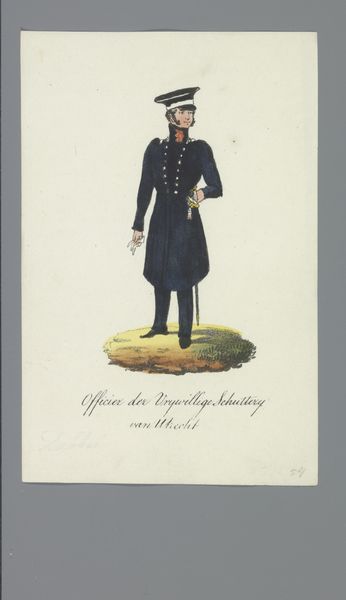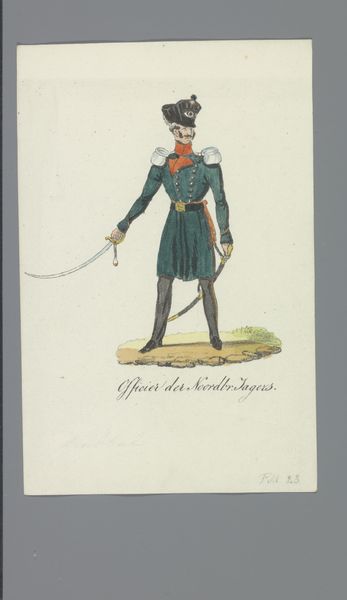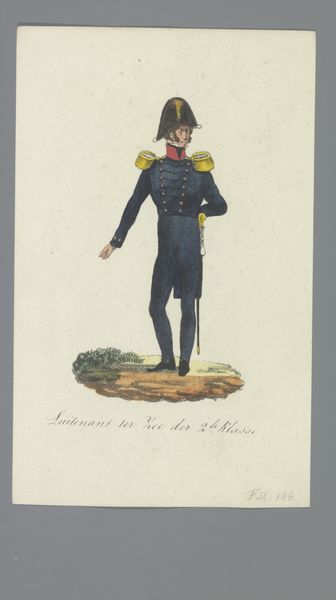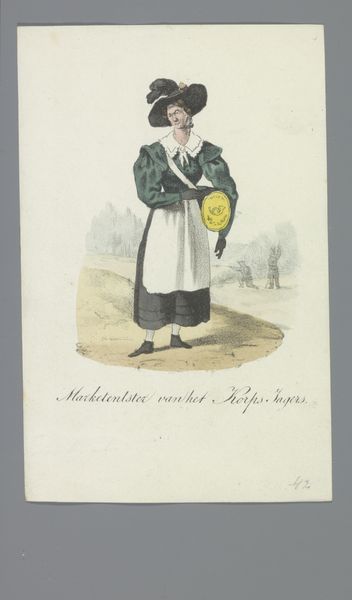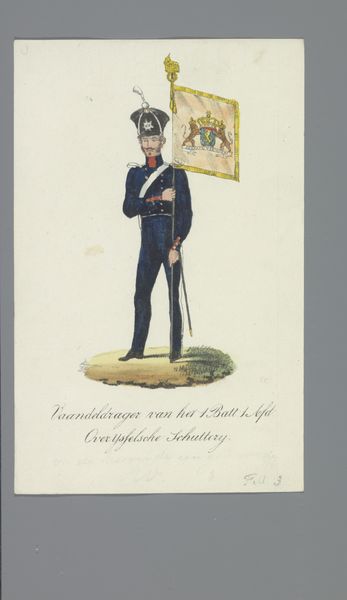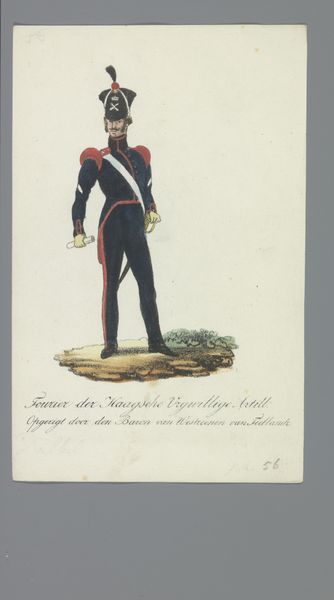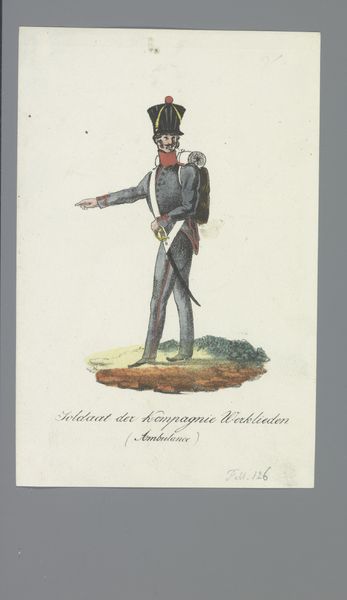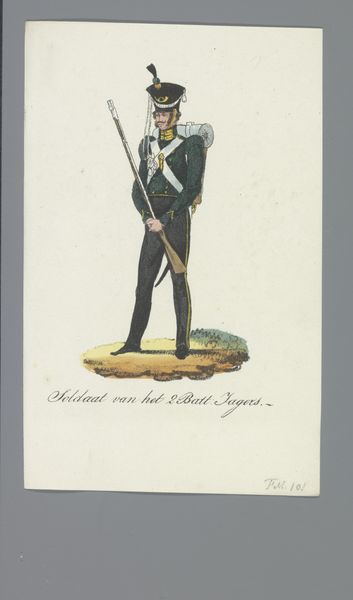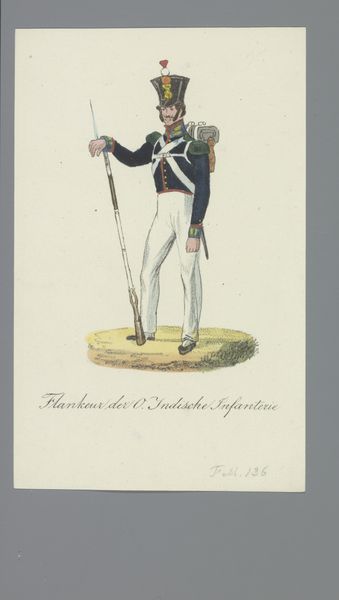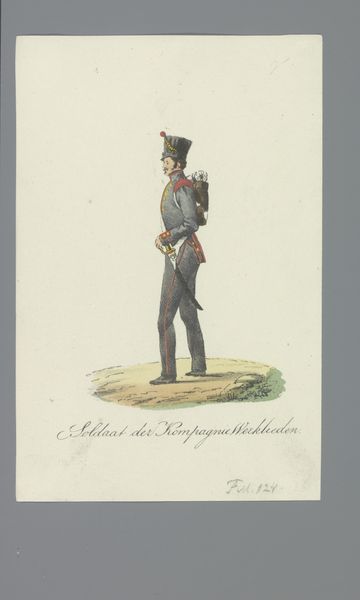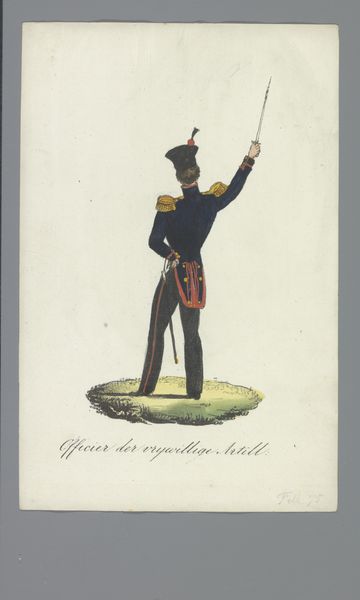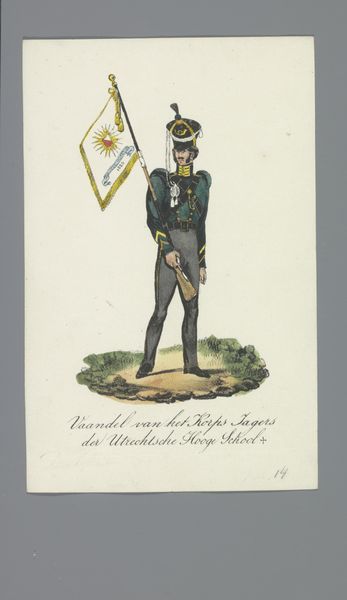
drawing, watercolor
#
portrait
#
drawing
#
figuration
#
watercolor
#
romanticism
#
costume
#
watercolour illustration
#
history-painting
Dimensions: height 170 mm, width 110 mm
Copyright: Rijks Museum: Open Domain
Curator: Here we have a watercolour drawing from between 1835 and 1850, by Albertus Verhoesen, entitled "Schutter der Vrijwillige Schutterij van Utrecht"—a militiaman of the Utrecht voluntary civic guard. What is your first impression? Editor: My first thought is a sense of restrained idealism. He looks quite young and, although armed, his stance is more pensive than aggressive. There's a clear romanticism here, both in the medium itself and the figure's self-conscious pose. Curator: Yes, it speaks to the Romantic movement’s interest in nationalism, civic virtue, and idealised representations of people and landscapes. The civic guards themselves evoke imagery associated with the protection of a city and local culture. What is it that he is protecting? Editor: That’s where it gets interesting. The date situates this artwork in a specific historical and political context, which is between the end of the Napoleonic era and a time of growing national consciousness across Europe. So, are we viewing this piece through a lens of genuine patriotism, or as a construction of national identity at a time of considerable socio-political tension and uncertainty? The "volunteer" aspect is something worth highlighting. Curator: Absolutely, voluntary civic guards existed long before this, rooted in medieval traditions of urban self-defence. Yet in the nineteenth century, their symbolic importance shifts. This militiaman embodies a citizen soldier, a guardian of bourgeois order as much as a defender against foreign invasion. The X-shaped white band around his torso seems almost heraldic in its symbolism. Editor: The costume certainly draws upon recognisable motifs. But even these motifs were heavily mediated during the period as Romantic painters looked back to, and selectively reinvented, past forms of dress to project ideals. What visual traditions and symbolic precedents does it conjure, and what ideological weight does this lend to the portrayed volunteer? Curator: It evokes, perhaps consciously, imagery of freedom fighters of the past, lending the civic guard a sense of historical legitimacy and purpose. There's a certain tension here—the historical reference clashing with the somewhat bland ordinariness of this citizen’s attire. Editor: It’s the combination of aspiration and reality, I think, that makes this watercolour so resonant. It captures the zeitgeist of a time, revealing a will to establish continuity with a certain cultural past through visual associations, all while participating in constructing something rather new. Curator: Precisely! A romantic echo that helps make sense of its own historical moment, however briefly. Editor: I leave with more questions than answers, always a good sign.
Comments
No comments
Be the first to comment and join the conversation on the ultimate creative platform.

